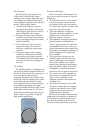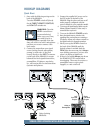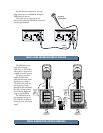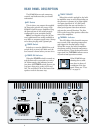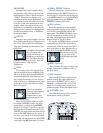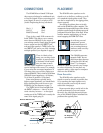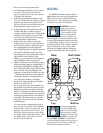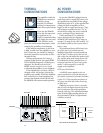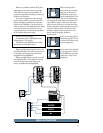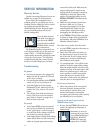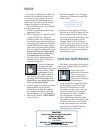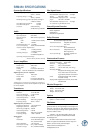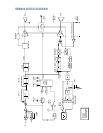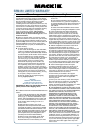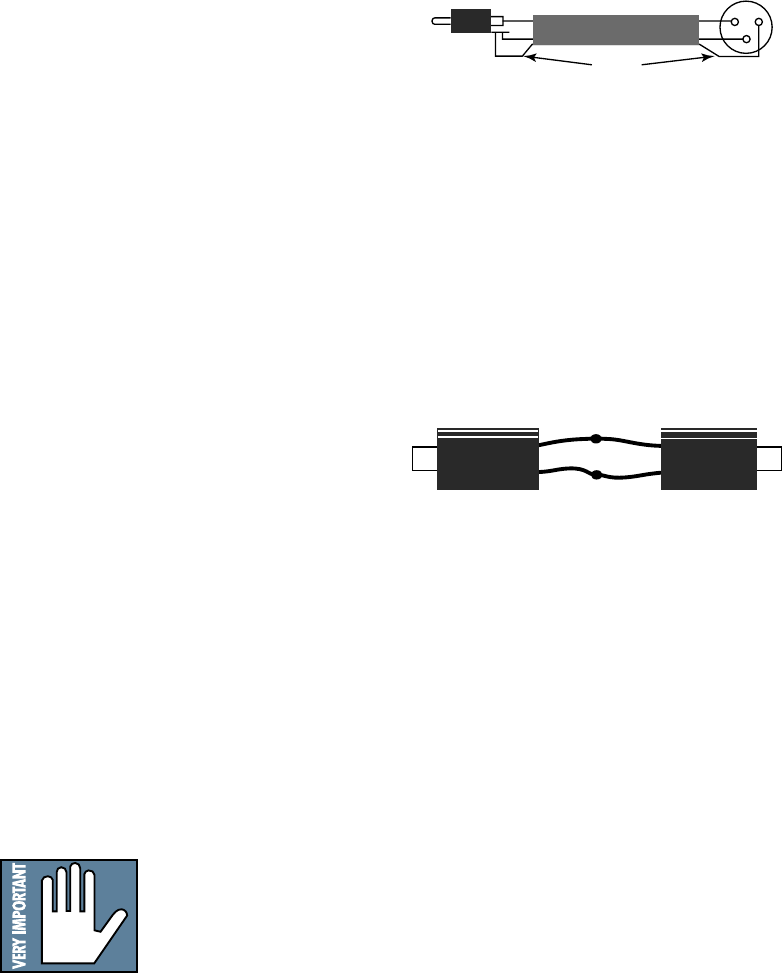
15
• Make sure there is room behind the rear
panel to provide sufficient ventilation to
the heatsink.
Bad sound!
• Is it loud and distorted? Follow the
procedures described in the “Quick
Start” section to verify that the levels
are set properly.
• Is the input connector plugged com-
pletely into the jack? Be sure all
connections are secure. It’s a good idea
to periodically clean all electrical
connections with a non-lubricating
electrical contact cleaner.
Noise
• Make sure all connections to the active
speakers are good.
• Make sure none of the signal cables are
routed near AC cables, power trans-
formers, or other EMI-inducing devices.
• Is there a light dimmer or other SCR-
based device on the same AC circuit as
the SRM450? Use an AC line filter or
plug the SRM450 into a different AC
circuit.
Hum
• Turn the LEVEL control all the way
down. If the noise disappears, it’s
coming from the signal source. If not,
try disconnecting the cable connected to
the INPUT jack. If the noise disappears,
it could be a “ground loop,” rather than
a problem with the SRM450. Try some
of the following troubleshooting ideas:
• Use balanced connections throughout
your system for the best noise rejection.
• Whenever possible, plug all the audio
equipment’s linecords into outlets which
share a common ground (see the diagram
on page 13). The distance between the
outlets and the common ground should
be as short as possible.
Never remove the ground
pin on the power cord of
the SRM450 or any other
component. This is very
dangerous.
• The hum may appear when using an
unbalanced source (consumer preamp,
CD player, VCR, etc.). This is caused by
shield
12
3
XLRRCA
3-Conductor Cable
the unbalanced-to-balanced interface
between the devices (and exacerbated
by the fact that most consumer audio
equipment have a two-wire linecord,
without the third-pin safety ground).
Use an interconnect cable wired as
shown below. The important point is
that the shield and the wire from the
XLR pin 3 are joined at the RCA
(source) end.
• Disconnect any cables which come in
from outside, such as cable TV, satellite
TV or roof top antennas. They must be
disconnected from every part of your
system, such as the TV, VCR and
preamp. If the hum goes away, you can
add a “ground loop isolator” in your
cable line. This is an inexpensive device
available from video or TV dealers, or
you can make your own from two TV
baluns (standard TV 75/300 ohm
adaptors):
The baluns are threaded at one end
(75 ohm) to fit TV coax cable and have
two wires at the other end (300 ohm).
They will not affect the video quality.
• If the hum persists, try removing compo-
nents one at a time from the back of the
mixer or preamplifier, and check for hum
each time (turn off your equipment before
you undo any connections). It is fairly
common to find more than one problem.
• If your preamp or mixer are the only
things connected to the SRM450s and
the hum is still there, try different
connection cables, or move the preamp/
mixer to another location.
• Pressing the LOW CUT FILTER may
help reduce the hum if you have trouble
finding the cause of the problem. Do this
anyway if you do not need to reproduce
the lower frequency range.
join (+insulate)
Balun
Balun



